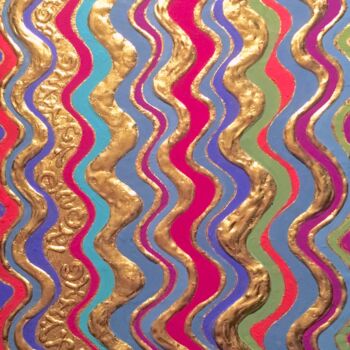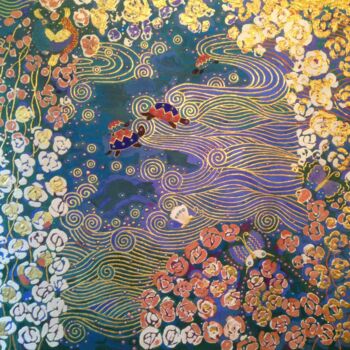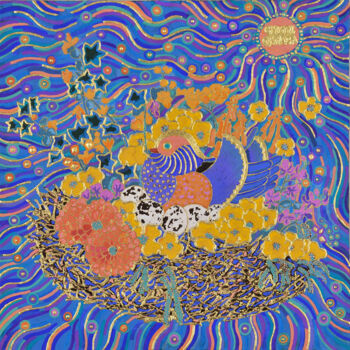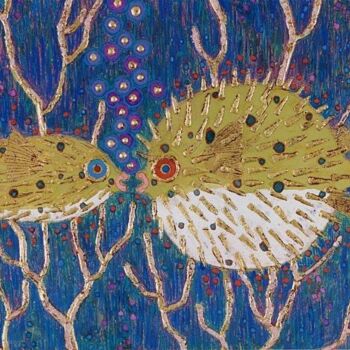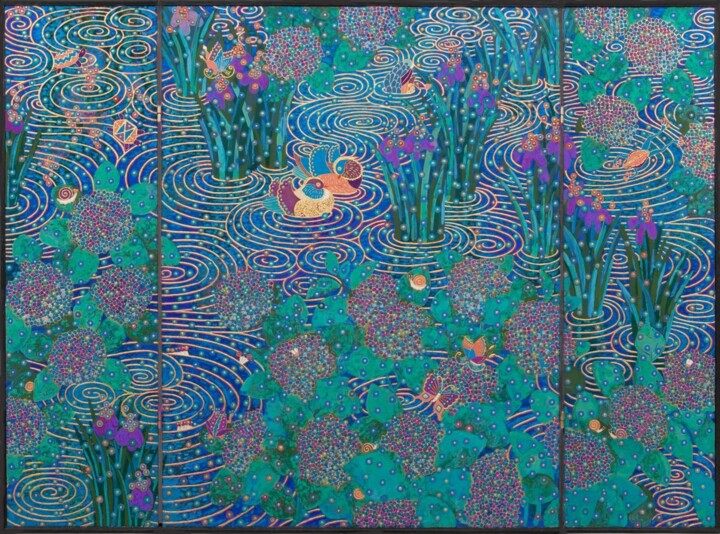
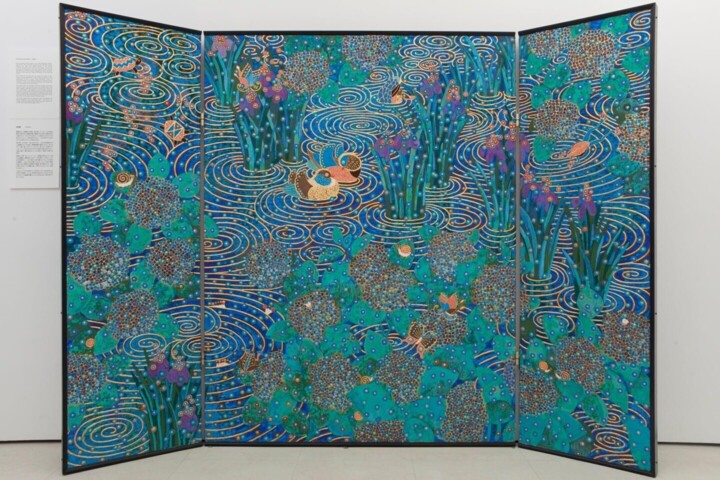
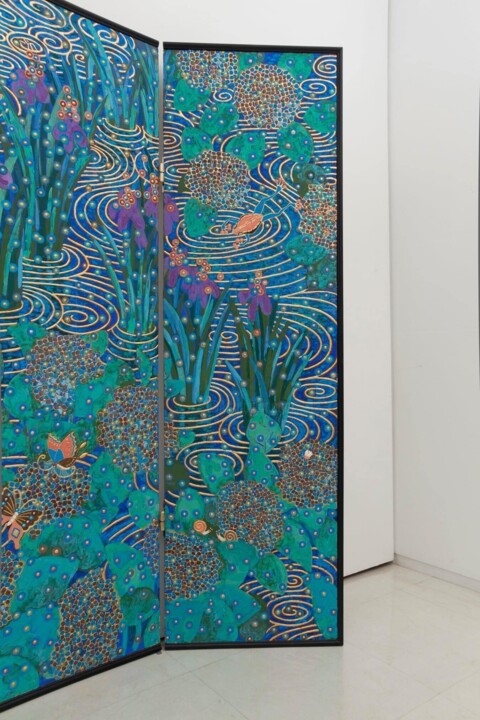
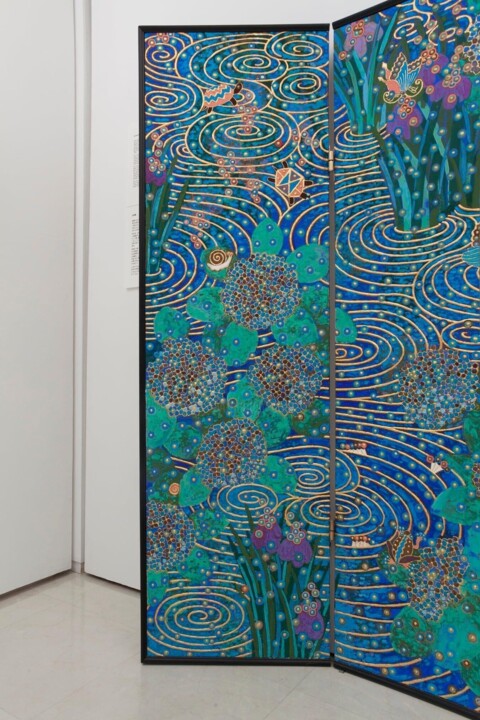
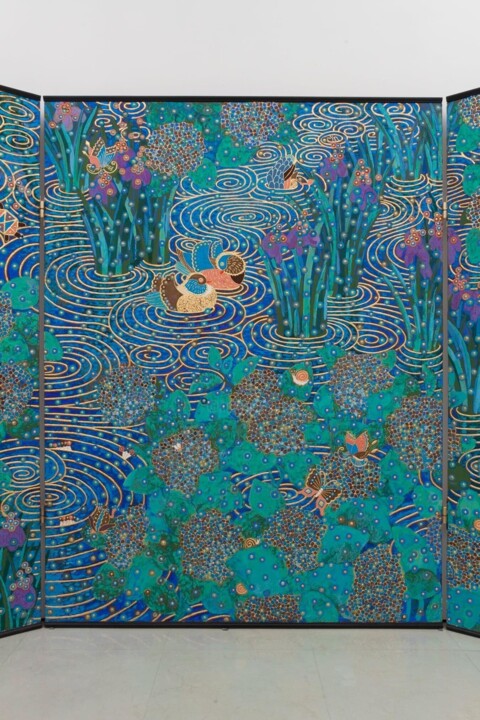
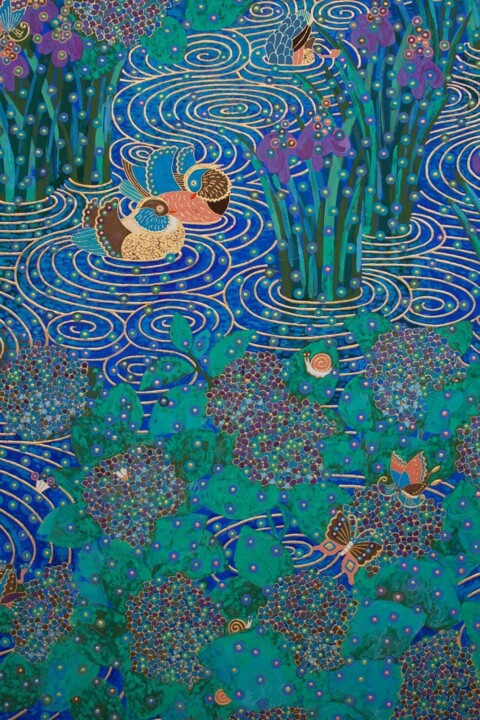
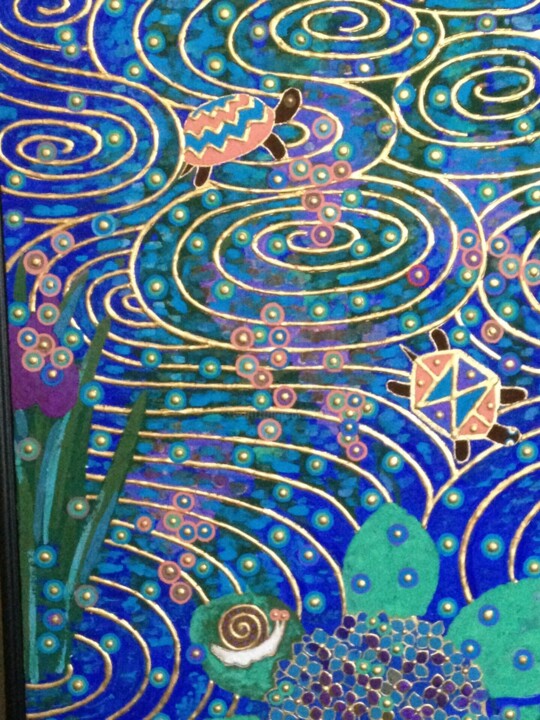
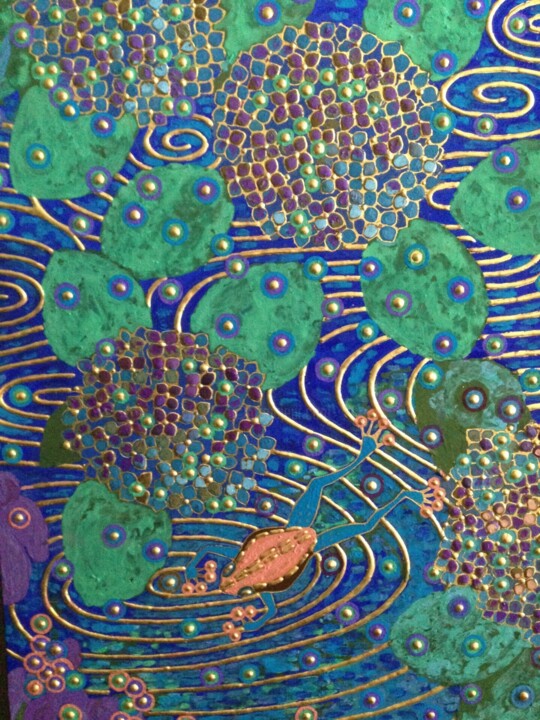
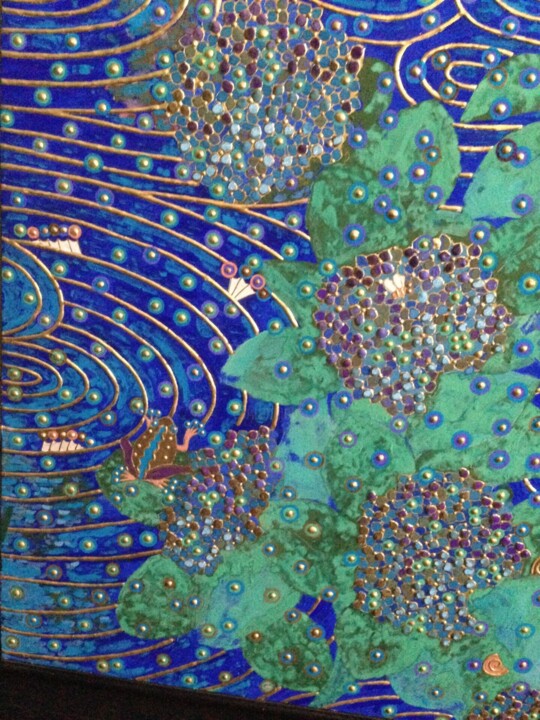
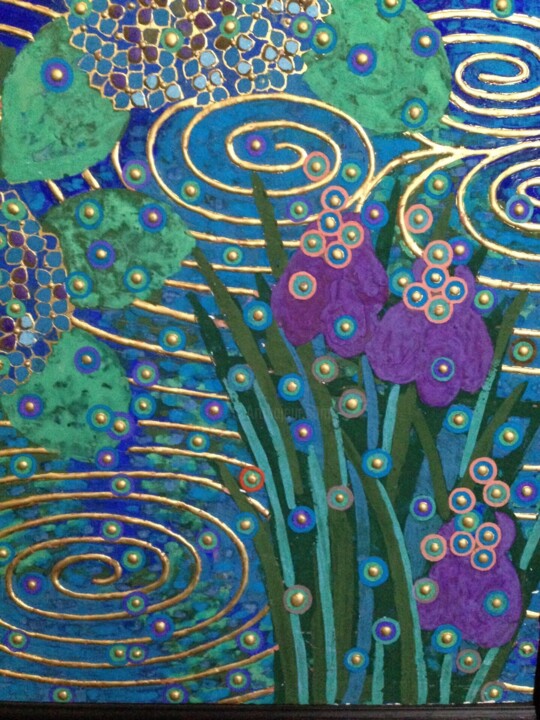
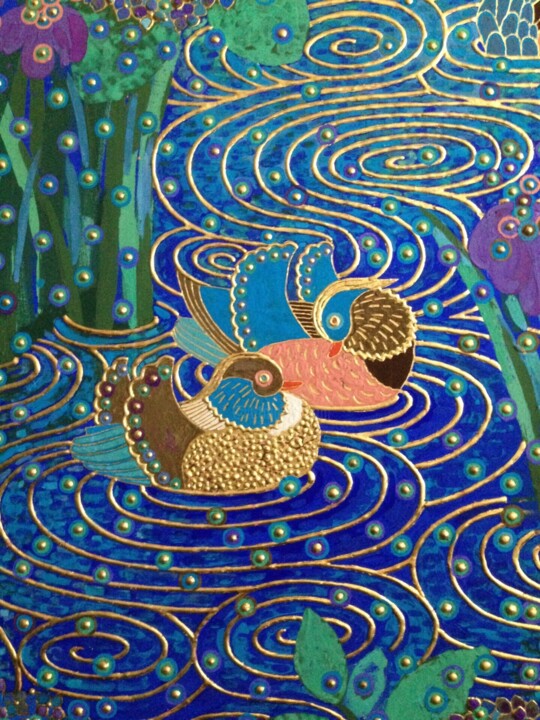
An Early Summer Rain (1991) Painting by Chiori Ohnaka
Sold by Chiori Ohnaka
This image is available for download with a licence
Sold by Chiori Ohnaka
-
Original Artwork (One Of A Kind)
Painting,
Pigments
/
Acrylic
on Wood
- Dimensions Height 66.9in, Width 90.6in
- Artwork's condition The artwork is in perfect condition
- Framing This artwork is framed
- Categories Oriental Art Love
An early summer rain 1991 (H170 W230) Early summer is the season of iris and hydrangea blossoms and rain. Chiori Ohnaka embarked on this painting initially inspired by Red and White Plums in Spring (1710-1716) and Irises (1702) by Korin Ogata. And while she was working, she listened to the then popular song “Just Like the Waters of a River (Kawano Nagareno Youni)” by Hibari Misora, which led her to deepen her thoughts on the meaning of life. The sound of rain, the flow of water, the fragility of life. Ducks, turtles, butterflies, snails. Small creatures in the complexity of life in pairs, each individual, secure in loving closeness to their familiar loving species. Couples, lovers, a parent, a child. Love and peace between two individuals is the starting point of world peace. The vivid colors of hydrangea flowers change from cool green to blue, then purple, pink and finally brown. Color changes mark the dynamics of human life, and all life, until it fades. The flowing curves of the water symbolize maturity. Chiori Ohnaka often draws rain scenes, which makes the paintings more graceful. Moreover, the raindrops are the tears of God lamenting human misconduct. The rain is therefore the mark of the feeling of love of God. This work expresses the small joys that accompany the small changes in our daily lives. The beauty of the curved lines covering the whole painting reaches the viewer, who loses the passage of time.
初夏は菖蒲や紫陽花の花と雨の季節であります。
大仲千織は、初、尾形光琳の「春の紅白梅」(1710-1716)と「菖蒲」(1702)に触発されて、この絵に着手しました。そして、制作中に当時流行っていた美空ひばりの「川の流れのように」を聴き、生きることの意味について考えを深めるきっかけになったと言います。雨の音、水のせせらぎ、命のはかなさ。カモ、カメ、チョウチョ、カタツムリ。
複雑な生命の中にある小さな生き物たちは、つがいでそれぞれの慣れ親しんだ愛すべき種族に囲まれ、安心しています。夫婦、恋人、親子。二人の愛と平和は、世界平和の原点です。アジサイの花の鮮やかな色は、新緑から青、そして紫、ピンク、最後に茶色へと変化していきます。色の変化は、人間の生命、そしてすべての生命の、色あせるまでのダイナミックさを示しています。水の流れるような曲線は、成熟を象徴しています。
彼女は雨のシーンをよく描きますが、それが絵をより優雅なものにしています。しかも、雨粒は人間の不始末を嘆く神の涙であり、神の愛の証であると彼女は感じています。この作品は、日常の小さな変化に伴う小さな喜びを表現しています。全編を貫く曲線の美しさは、見る者の心に時間の経過を忘れさせてくれます。
Related themes
CHIORI OHNAKA Gold Leaf Artist
Chiori Ohnaka was born in Himeji, an ancient castle town in Hyogo. She studied at Tokyo University of the Arts and graduated in 1992. At the University, she was influenced by the Kano school of gold-leaf art, and developed and exhibited her distinctive style of gold-leaf painting during her studies.
“Message of Love and Peace” has been the theme she has pursued consistently throughout her artistic life. Sympathizing with socially vulnerable people such as women and children, her paintings express not only the feelings of sorrow but also the potential empowerment of love.
Since 2009, she has extended her artwork to overseas. Inspired by tapestries of Gobelins, and artworks of Van Gogh and Klimt, she has embodied love and peace via an uniquely developed modern gold-leaf artwork style at the crossroads of Western and Japanese world.
What messages do want to express with your paintings?
Dilemmas between ideal and reality, questions, sorrows, angers….
As I paint, I am enlightened, and negative feelings such as angers and sorrows are changed into joy and happiness.
For me, painting is like praying.
I used to think that loving someone is the minimum unit of love. But, I have realized that that is not the case. When I do love myself, I can love others. I think that it is important for one to love oneself. Then I realize one has one’s own dilemma and negative attitudes. One who can learn from one’s own experiences can love others. And love someone and loved by someone. Then, willingness to take care of others emerges. The chain of love develops courage.
Wars destroy the foundation of human life. Wars are the most critical mistake of human beings. We sincerely hope that we live peacefully regardless of nationalities and religions. We pray for that, don’t we?
We need to be aware of that. We just cannot make this world peace if we destroy the happiness of others.
We shall respect cultures and religions of other countries. Learning histories and understanding others’ backgrounds motivates us to be free from hatred. This very praxis leads us develop the peaceful future.
-
Nationality:
JAPAN

- Date of birth : 1967
- Artistic domains: Works by professional artists,
- Groups: Professional Artist Contemporary Japanese Artists
























